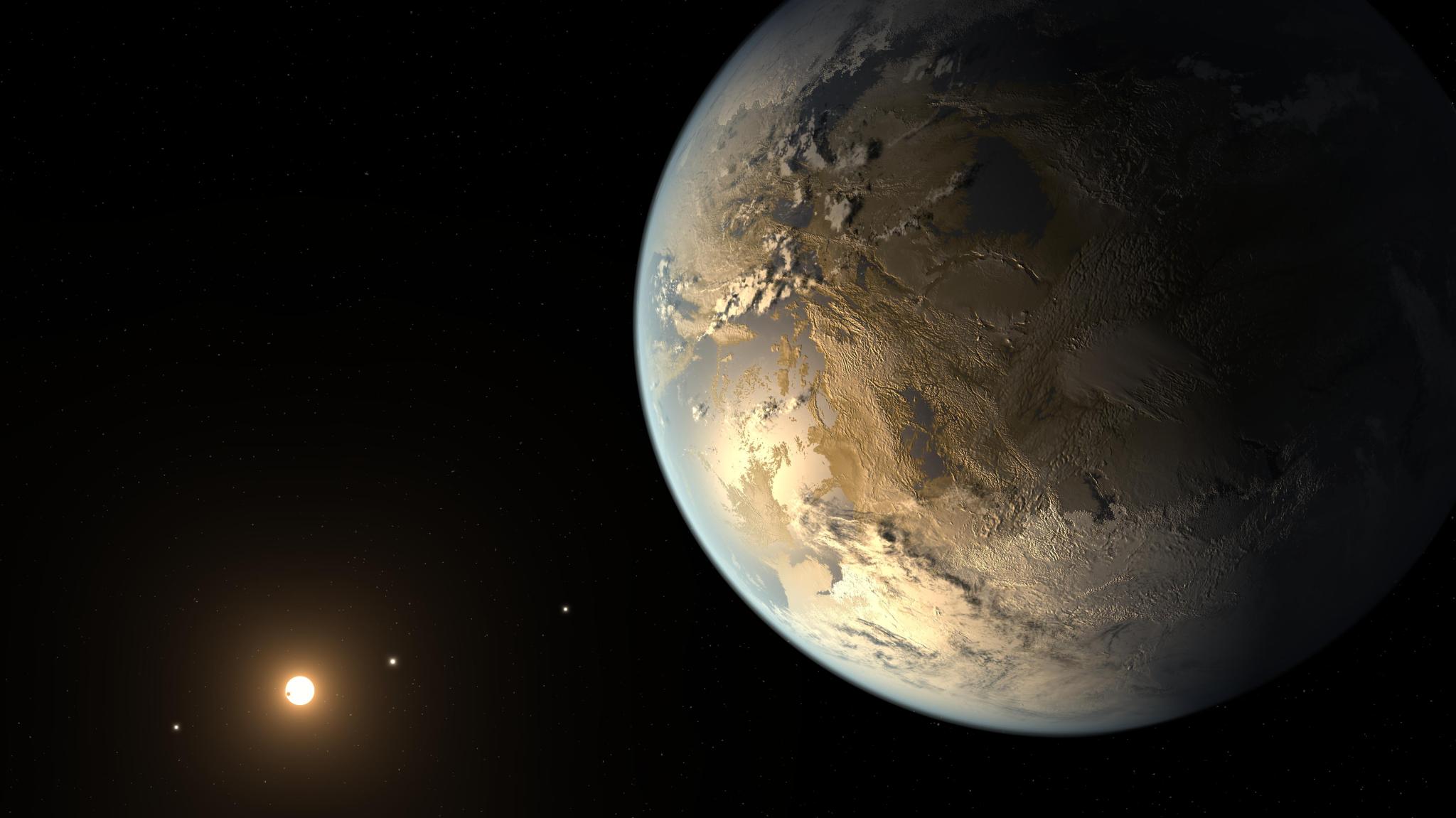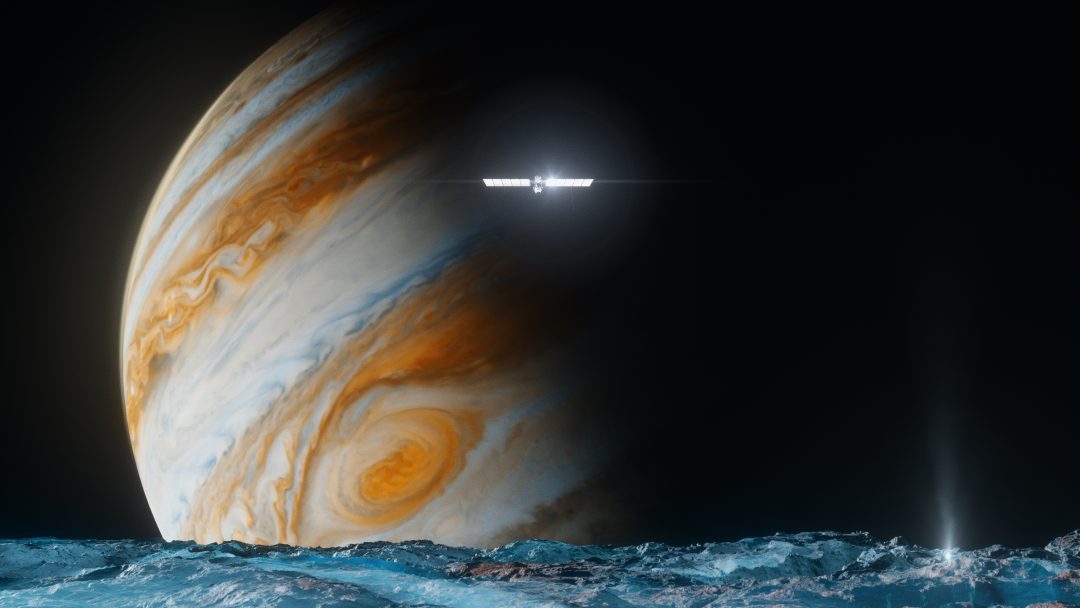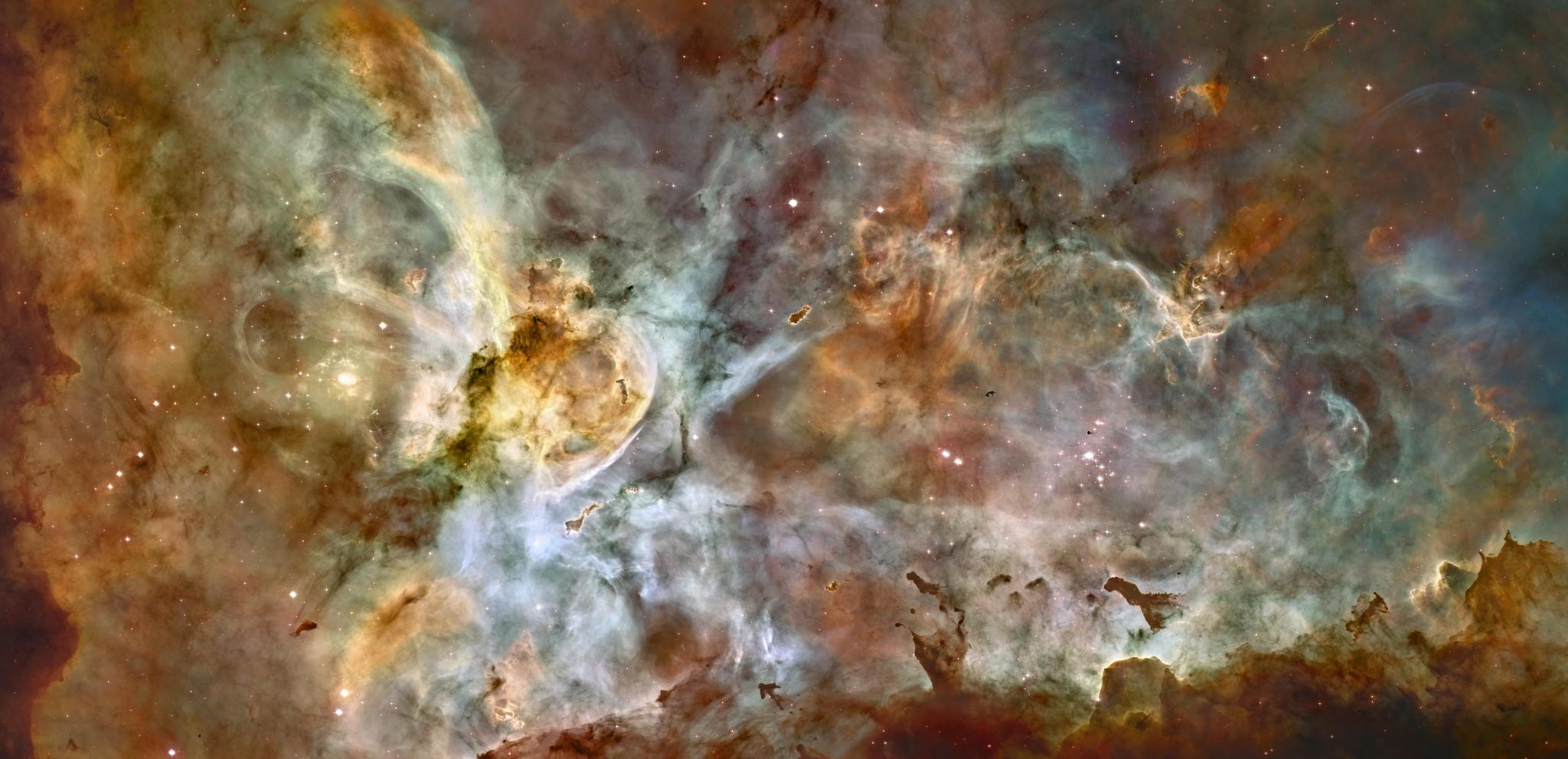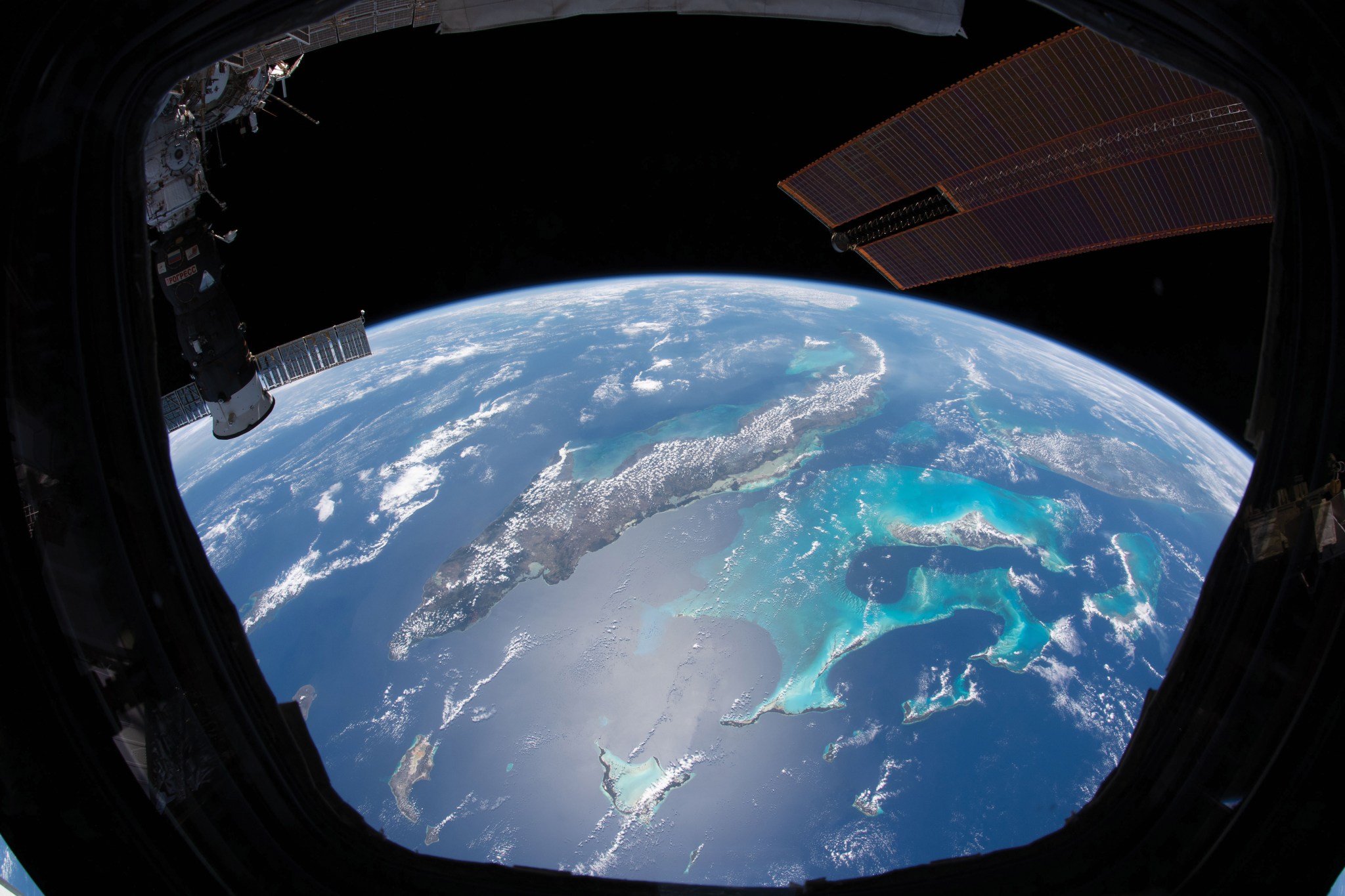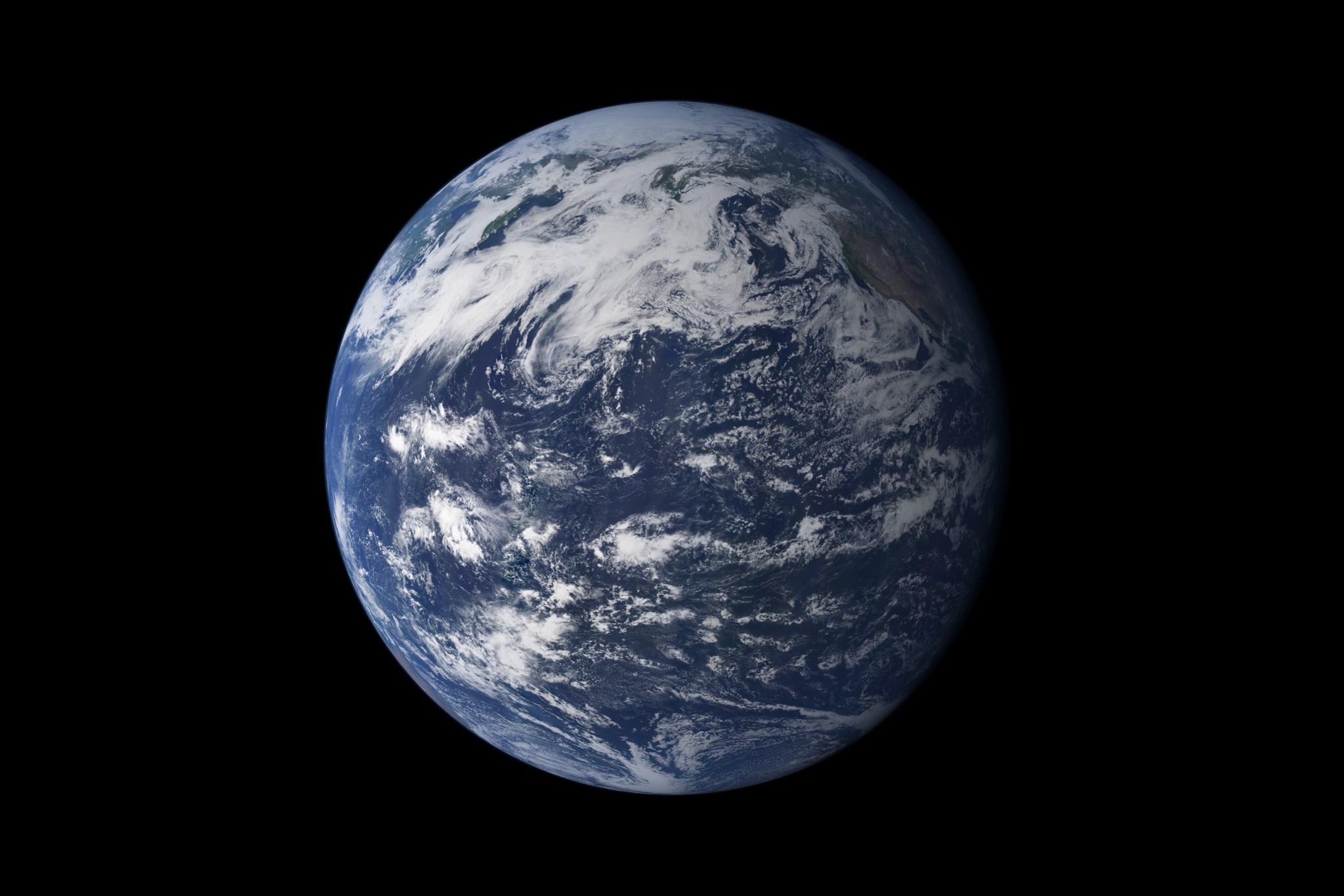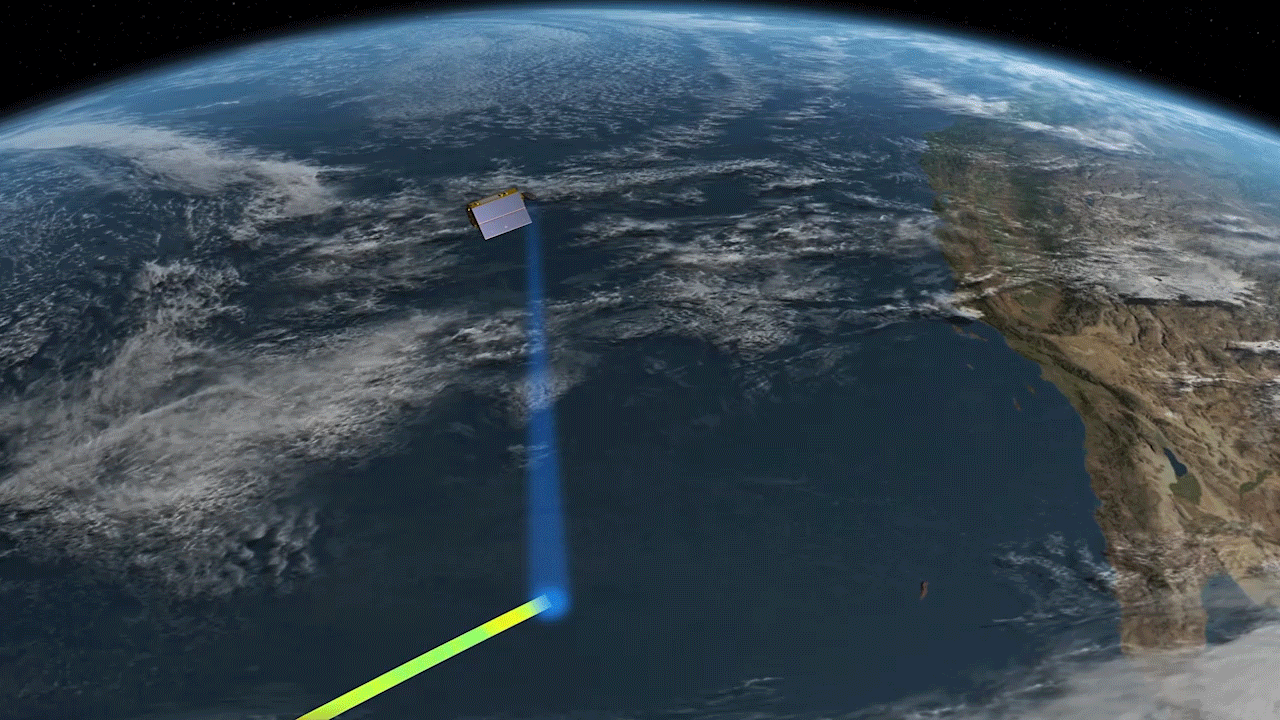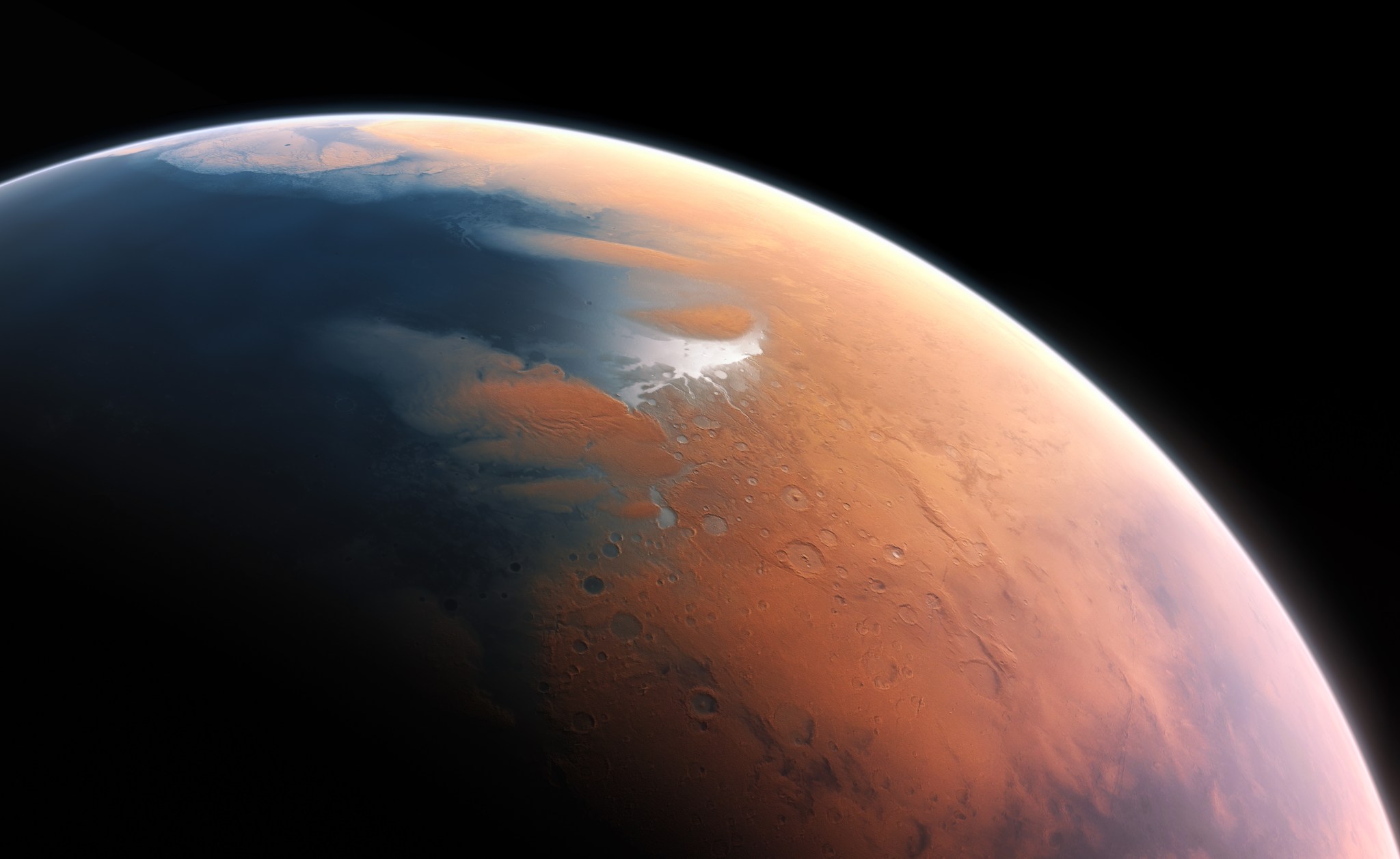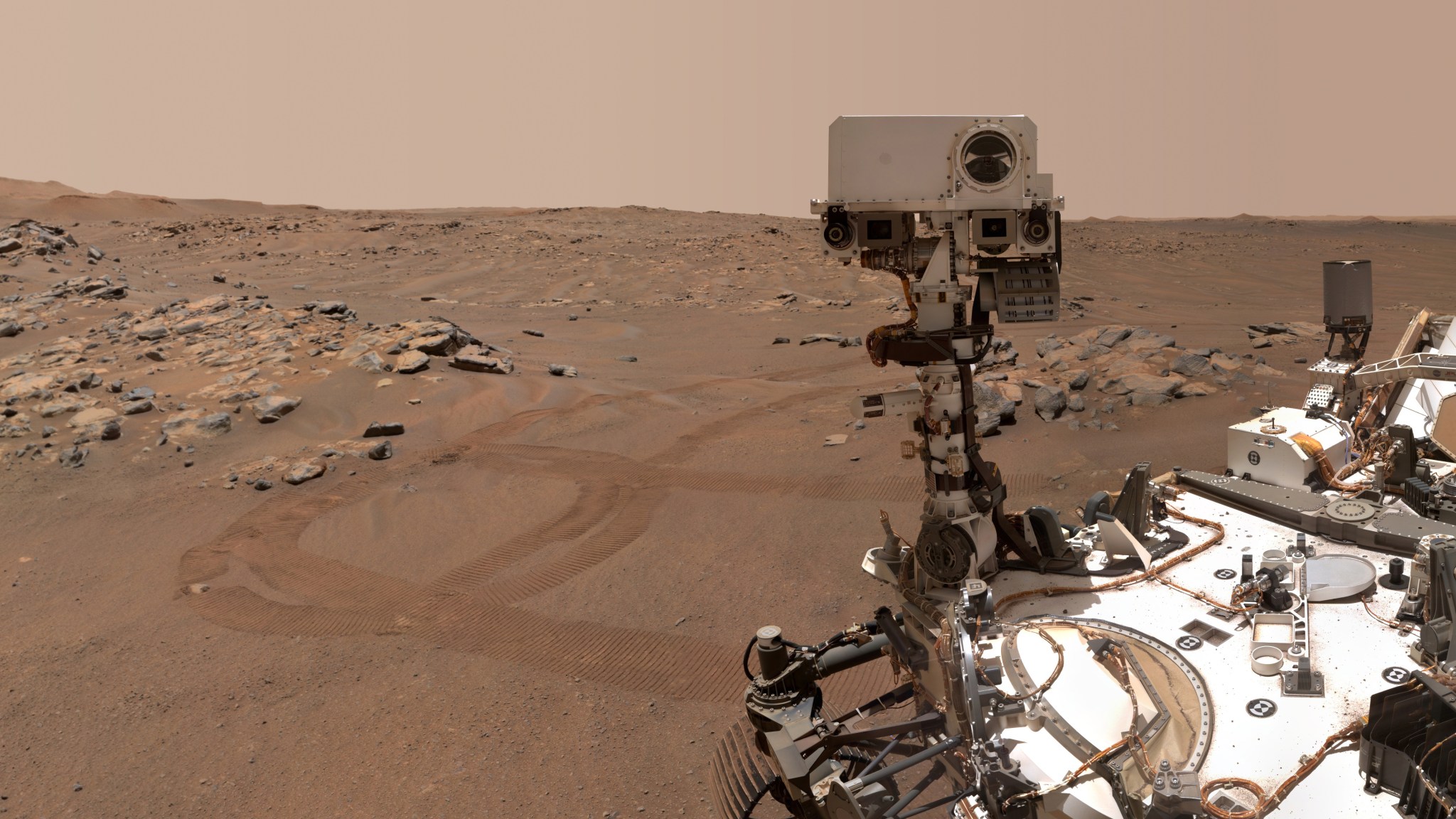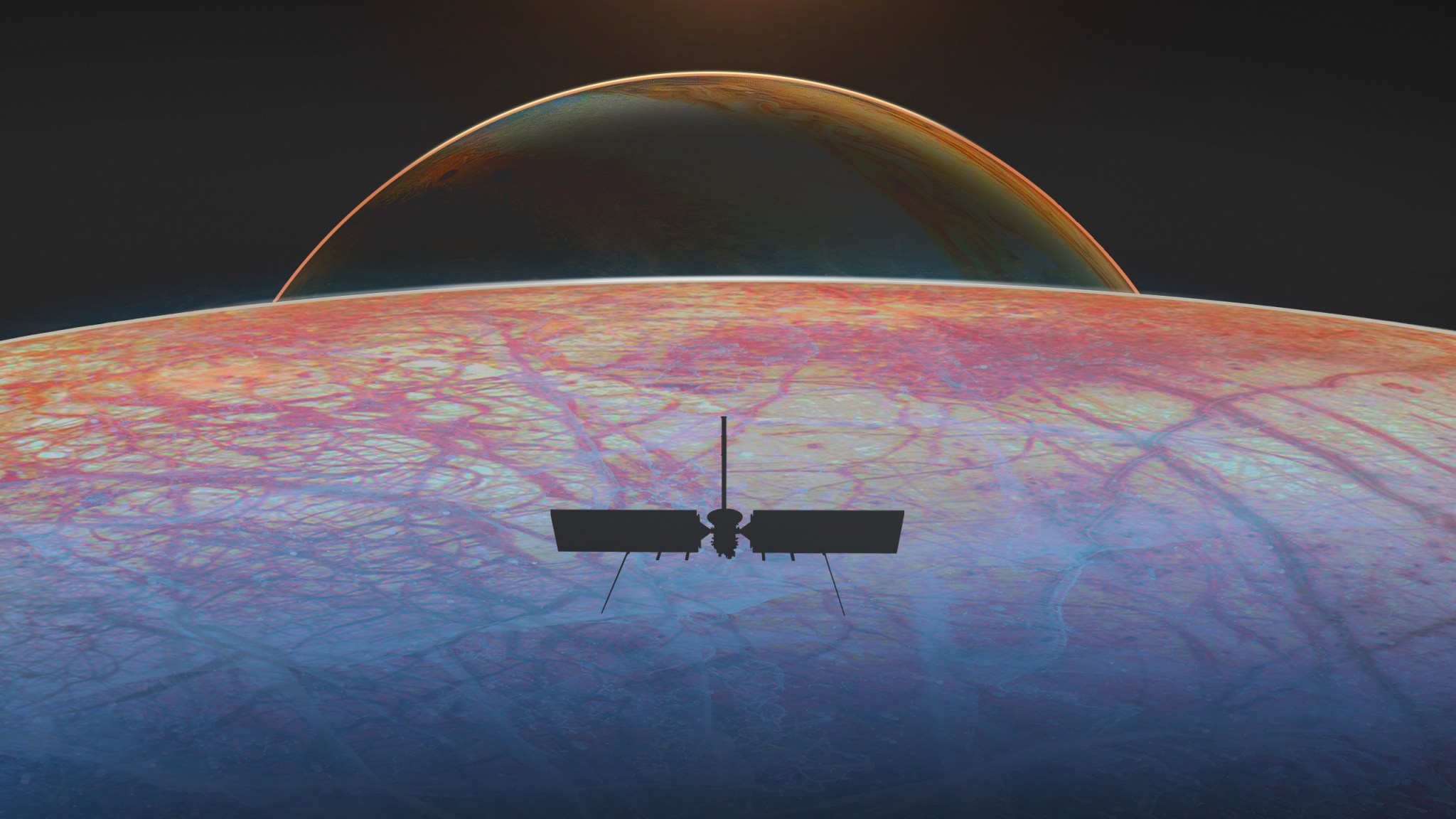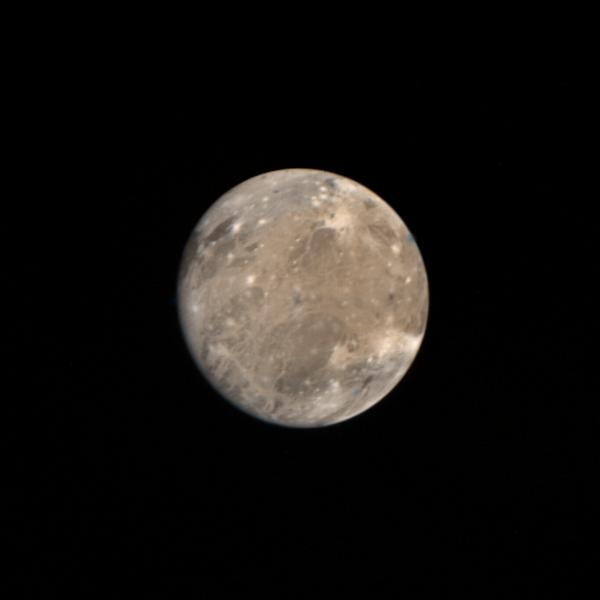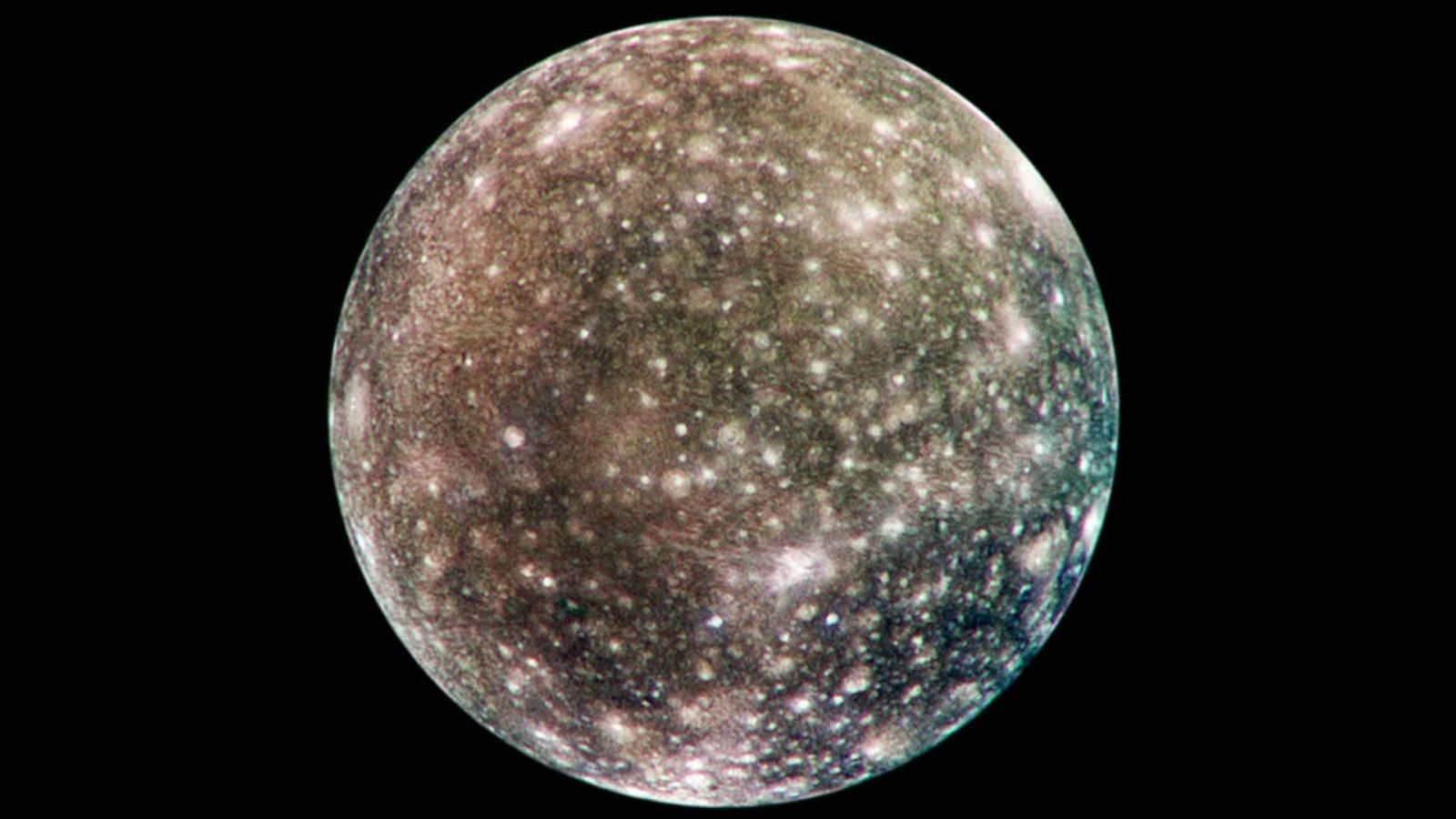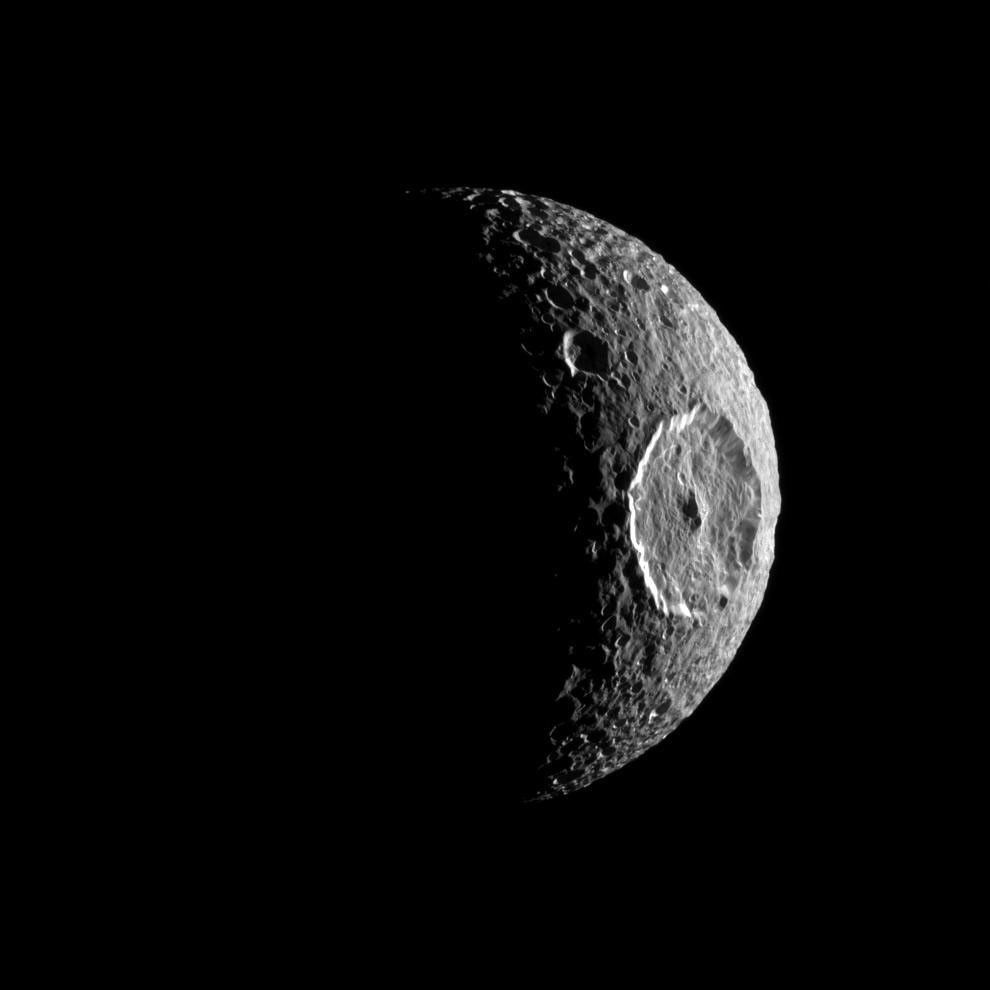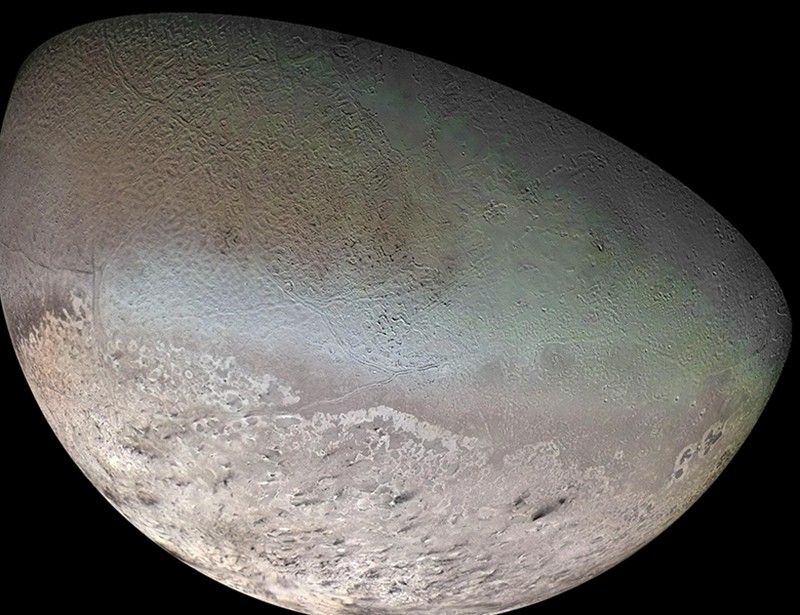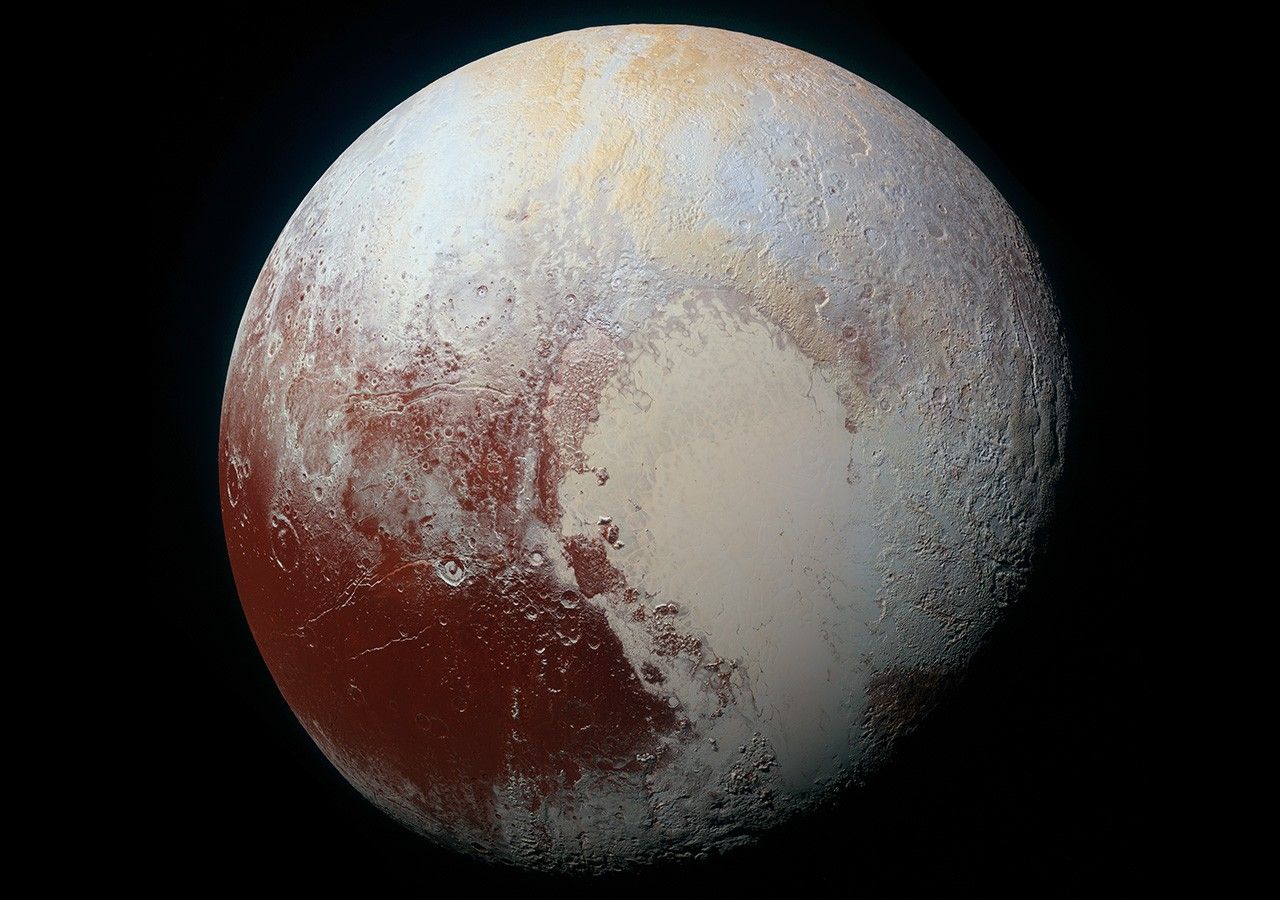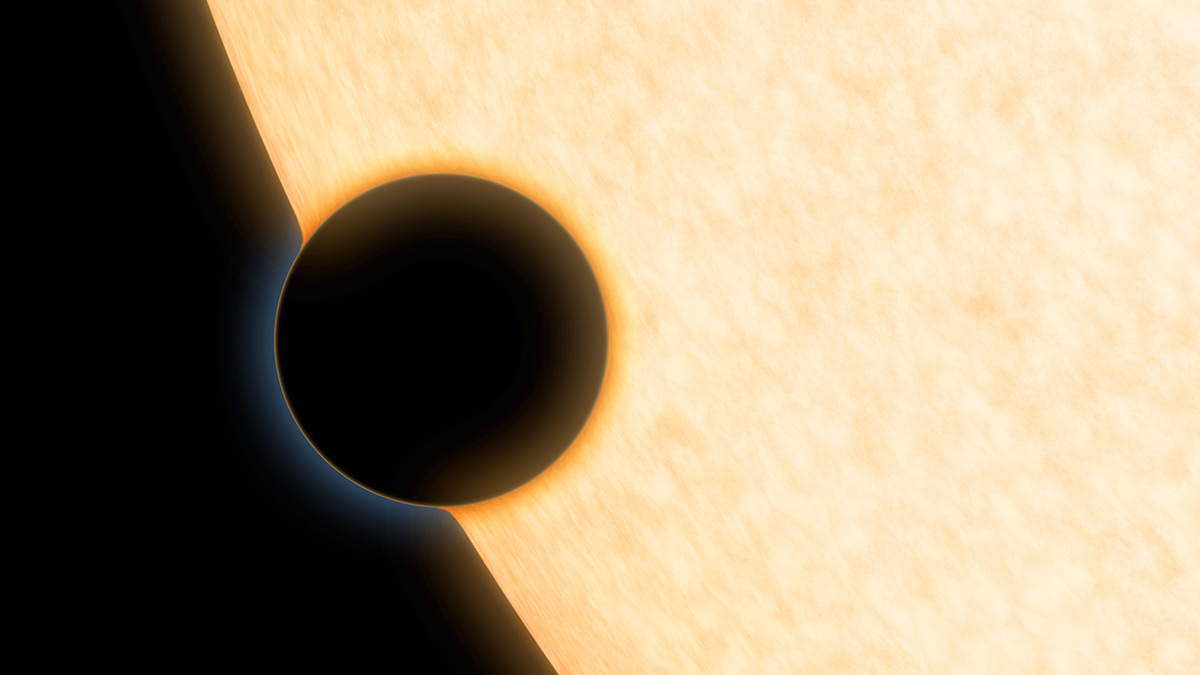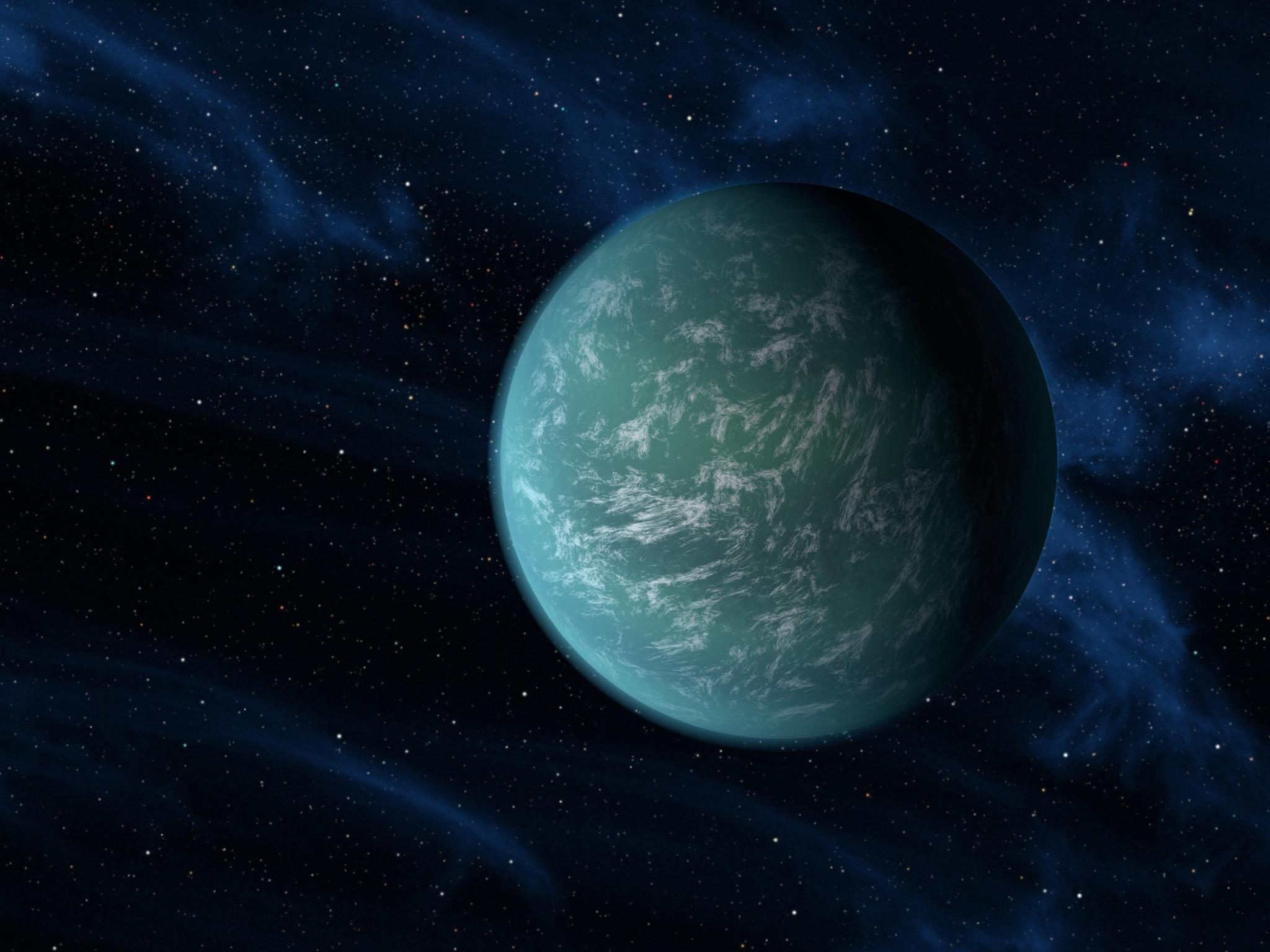The story of oceans is the story of life. Life as we know it requires three ingredients: energy, organic molecules, and liquid water. Our search for life beyond Earth is, in part, a search for planets and moons that harbor substantial liquid water. We call these places “ocean worlds,” and we’re learning that they could be ubiquitous in the galaxy.
Oceans define our home planet, covering the majority of Earth’s surface and driving the water cycle that dominates our land and atmosphere. But more profound still, the story of our oceans places our home in a far larger context that reaches deep into the universe and places us in a rich family of ocean worlds that span our solar system and beyond.
Origins of Oceans
Where do oceans come from?
What is the ultimate origin of water? A water molecule is made up of one atom of oxygen and two of hydrogen. Hydrogen was created in the Big Bang, and oxygen in the cores of stars more massive than the Sun. Enormous amounts of water, in gaseous form, exist in the vast stellar nurseries of our galaxy.
The Hubble Space Telescope peered into the Helix Nebula and found water molecules. Hydrogen and oxygen, formed by different processes, combine to make water molecules in the ejected atmosphere of this dying star. The origins of our oceans are in the stars.
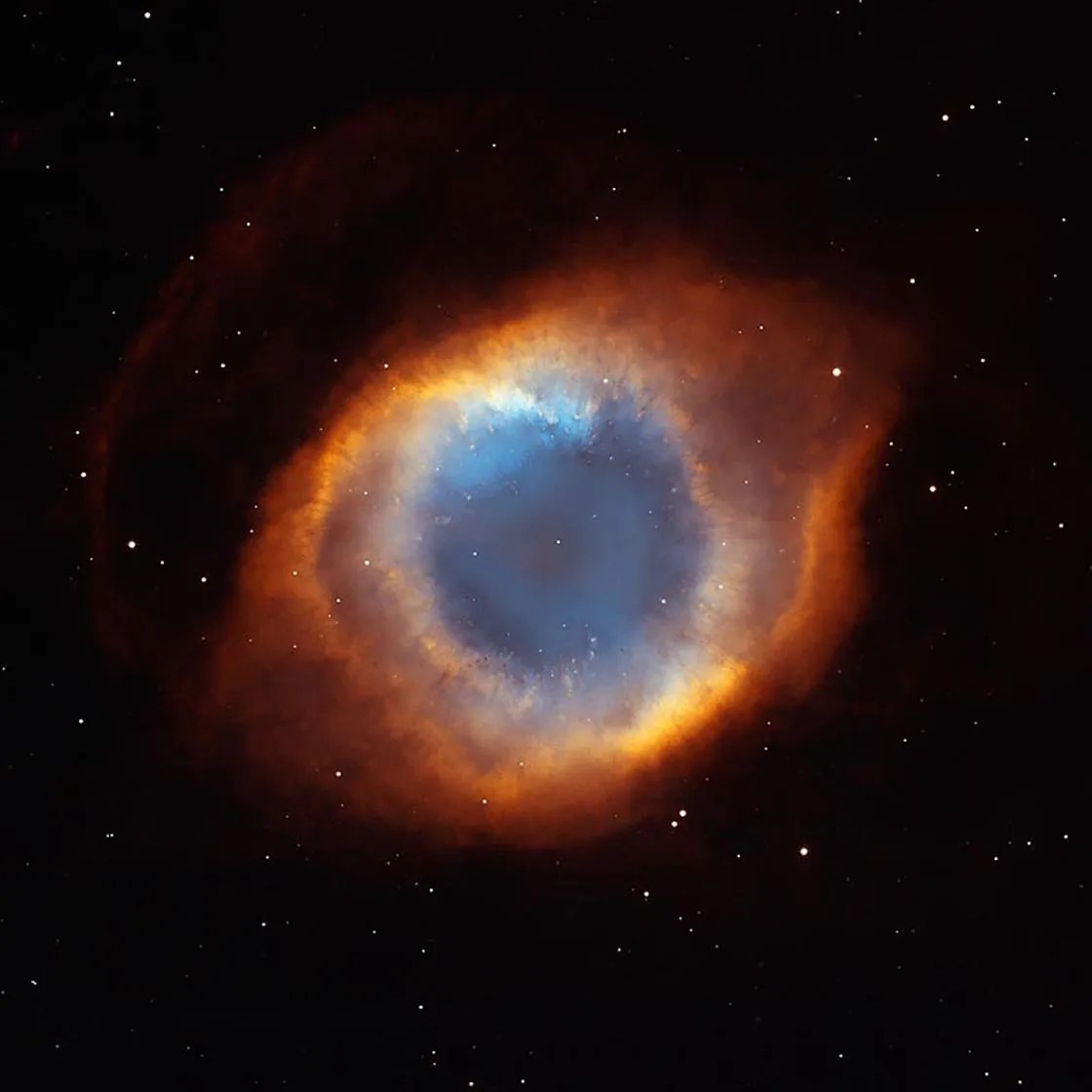
Water molecules exist in the Orion Nebula and are still forming today. The nebula is composed mostly of hydrogen gas; other molecules are comparatively rare. Even so, the nebula is so vast that it creates enough water every day to fill Earth’s oceans 60 times over. Water, along with every other molecule created in these stellar nurseries, becomes raw material for the formation of new planetary systems.
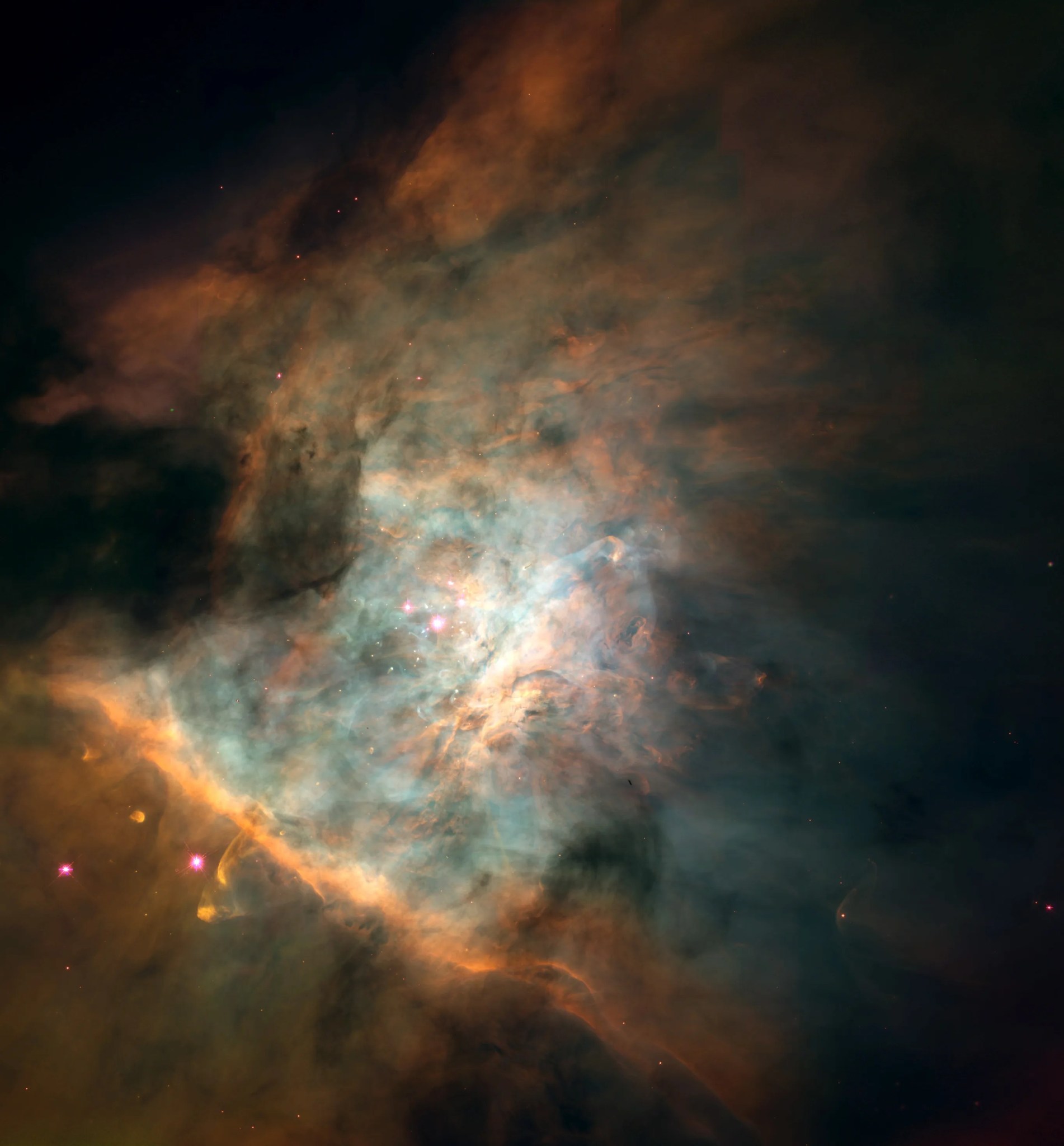
Water molecules are abundant in planetary systems forming around other stars. For instance, they have been found around the 20-million-year-old star Beta Pictoris, where a huge disk of dust and gas hints at collisions between comets, asteroids, and young planets.

Oceans of Earth
How did water arrive on Earth?
Asteroids and comets are debris left over from the formation of our solar system, and are rich in water. These small bodies are time capsules that contain tantalizing clues about what our solar system was like 4.5 billion years ago.
Most asteroids orbit the Sun between the planets Mars and Jupiter, but many swing nearer to Earth and even cross our orbit. Comets are found in the outer reaches of our solar system, either in the Kuiper Belt just beyond the orbit of Neptune, or in the vast, mysterious Oort Cloud that may extend halfway to the nearest star.
Over billions of years, countless comets and asteroids have collided with Earth, enriching our planet with water. Chemical markers in the water of our oceans suggest that most of the water came from asteroids. Other observations hint that ice, and possibly even liquid water, exists in the interiors of asteroids and comets.
How are our oceans changing?
NASA’s research on oceans also includes our own planet and helps us to better understand the role of Earth’s ocean in our planet’s climate system. And as we learn more about our own oceans, we will better understand worlds beyond Earth.
Water on Earth is very abundant – about 71 percent of Earth’s surface is covered by water. There are more than 326 million trillion gallons of it on Earth, and the oceans contain about 96.5 percent of all the planet’s water. Less than 3 percent of all water on Earth is fresh water (usable for drinking), and more than two-thirds of Earth’s fresh water is locked up in ice caps and glaciers.
As global temperatures increase, the ocean responds by expanding. Changing sea levels will affect everyone on our planet, and NASA has been monitoring these trends for decades.
Currently, ocean levels are rising at the rate of 0.13 inches per year. The Greenland ice sheet is melting at the rate of 287 billion tons a year, and the Antarctic ice sheet is losing 134 billion tons a year. Both will be factors in sea level rise.
Oceans Lost
Do planets lose their oceans over time?
Venus
Billions of years ago, Venus may have been our solar system’s first ocean world. Venus lacks a strong global magnetic field, which on Earth, helps to protect our atmosphere. A runaway greenhouse effect raised temperatures enough to boil off the water, which escaped into space due to the solar wind.
Ancient Mars
Mars was once much more Earth-like, with a thick atmosphere, abundant water, and global oceans (as in this artist’s conception). Billions of years ago, Mars lost its protective global magnetic field, leaving it vulnerable to the effects of our Sun: solar wind and space weather.
The MAVEN mission has measured Mars continuing to lose its atmosphere to the Sun at the rate of nearly 400 kilograms per hour. Scientists estimate that Mars has lost approximately 87 percent of the water it had billions of years ago.
Mars today
Most of the remaining water on Mars is frozen in the ice caps or trapped beneath the soil, but Mars once rippled with rivers and ponds. Billions of years ago, the Red Planet provided a potential habitat for microbial life. As the planet’s atmosphere thinned over time, that water evaporated, leaving the frozen desert world that NASA’s Mars missions study today.
Oceans of Our Solar System
Which planets and moons in our solar system are considered ocean worlds?
Earth isn’t the only ocean world in our solar system. Water on other worlds exists in diverse forms on moons, dwarf planets, and even comets. Ice, water vapor in the atmosphere, and oceans on other worlds offer clues in the quest to discover life beyond our home planet.
Jupiter’s Moon Europa
Scientists strongly suspect that a salty, subsurface ocean lies beneath Europa's icy crust. Tidal heating from its parent planet, Jupiter, maintains this ocean's liquid state and could also create partially melted pockets, or lakes, throughout the moon's outer shell. The Hubble Space Telescope has spotted possible water plumes erupting from the moon's surface, which may be excellent targets for NASA’s upcoming Europa Clipper mission.
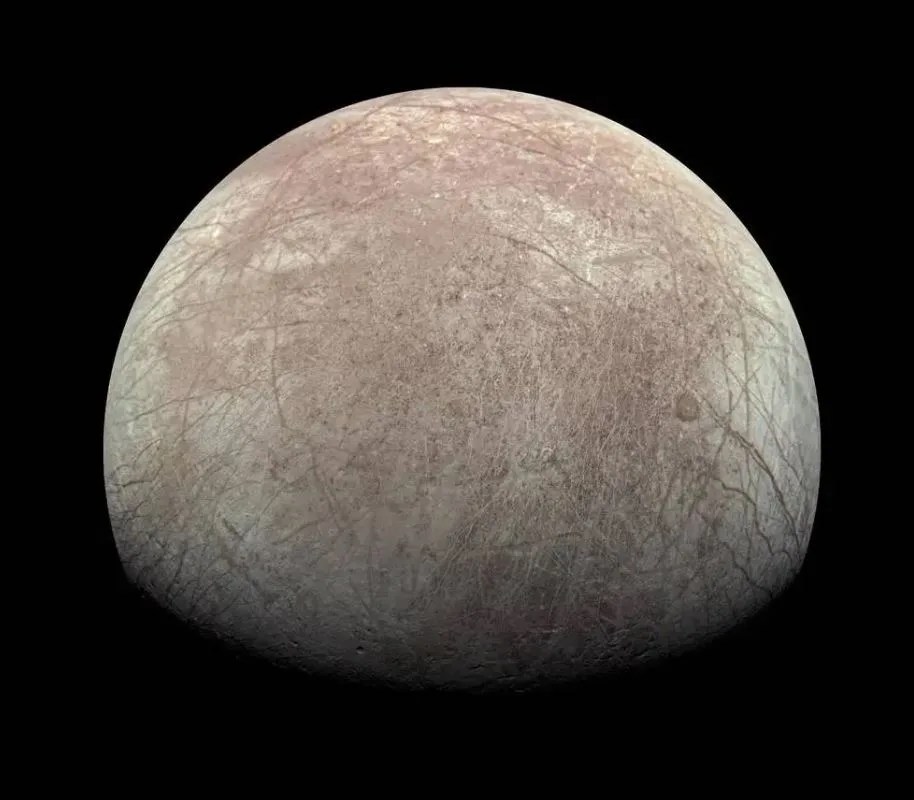
Jupiter’s Moon Ganymede
Ganymede is the largest moon in our solar system, and the only moon with its own magnetic field. Studies indicate a global, underground saltwater ocean is present there. Ganymede could in fact have several layers of ice and water sandwiched between its crust and core.
Jupiter’s Moon Callisto
Callisto’s cratered surface lies at the top of an ice layer estimated to be about 124 miles (200 km) thick. An ocean, which is thought to be at least 6 miles (10 km) deep, could be directly beneath the ice.
Saturn’s Moon Enceladus
Scientists on NASA’s Cassini mission discovered that Enceladus has a global ocean of liquid water beneath its icy shell. This underground ocean is venting into space, feeding the moon's impressive plume, which sprays from deep fissures called "tiger stripes" near the moon's south pole. Cassini flew through the plume, and over the course of the mission, its instruments detected organic and nitrogen-bearing molecules such as acetylene, ammonia, carbon dioxide, and methane. And silica grains in the plume are of a size that likely formed in the kind of hydrothermal vents that, on Earth, are the foundation of rich ecosystems.
Saturn’s Moon Titan
Titan is believed to have a salty subsurface ocean – as salty as the Dead Sea on Earth – beginning about 30 miles (50 km) below its ice shell. It is also possible that Titan’s ocean is thin and sandwiched between layers of ice, or is thick and extends all the way down to the moon’s rocky interior.
Seas, lakes, and rivers are found on Titan’s surface, but they are not filled with water. Instead, they are liquid hydrocarbons – primarily methane and ethane.
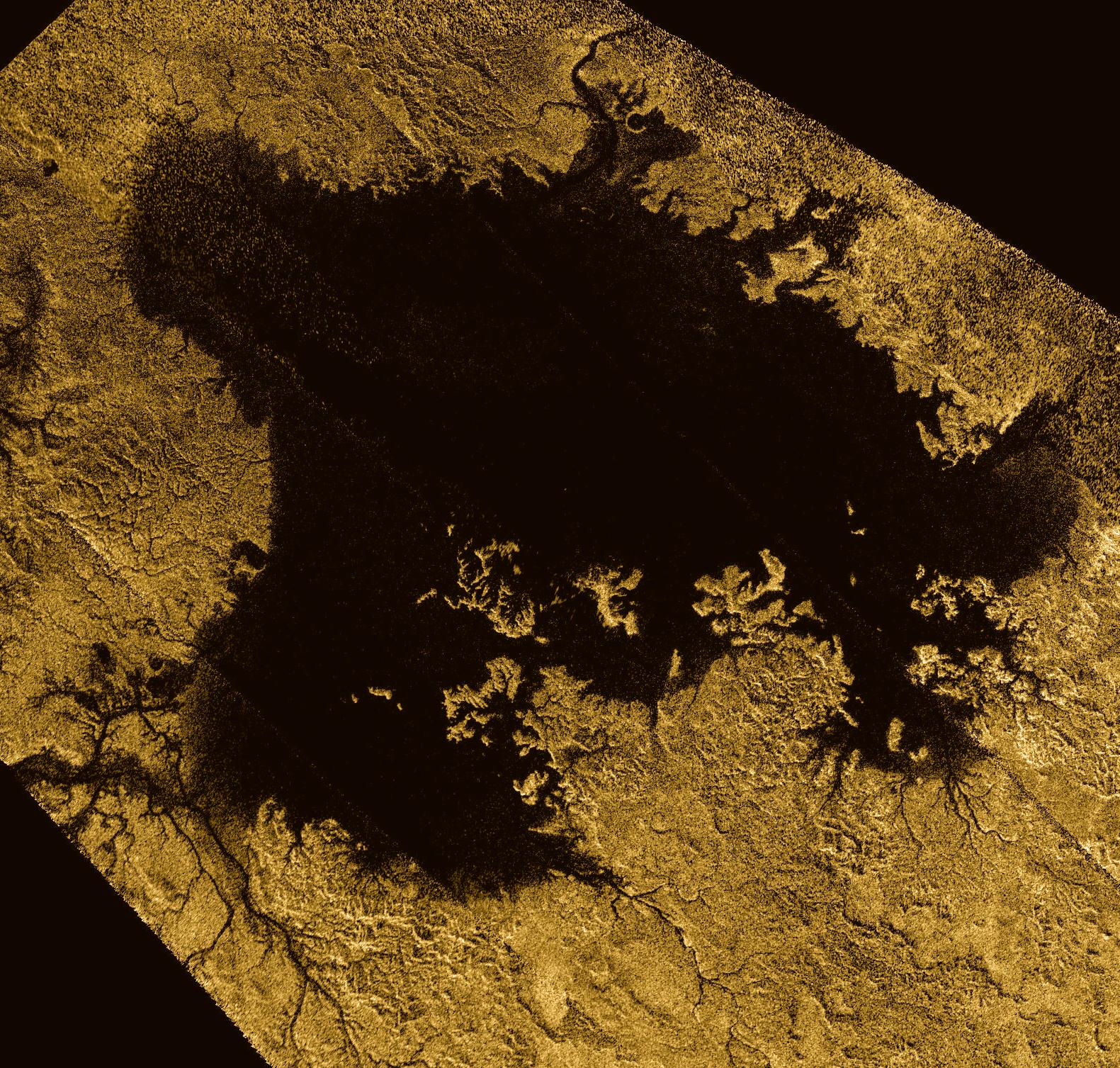
Saturn’s Moon Mimas
Research suggests that Mimas has either a subsurface ocean or that its core is shaped like a football. If Mimas is hiding a liquid water ocean, it lies 15 to 20 miles (25 to 30 km) beneath the moon’s impact-battered surface.
Neptune’s Moon Triton
Active geysers on Triton spew nitrogen gas, making this moon one of the known active worlds in the outer solar system. Volcanic features and fractures mark its cold, icy surface, likely results of past tidal heating. A subsurface ocean at Triton is considered possible, but is unconfirmed.
Dwarf Planet Pluto
With towering mountains of water ice and flowing glaciers of nitrogen and methane ice, Pluto is a surprisingly active world. Mysterious fault lines, some hundreds of miles long, suggest that Pluto has a hidden subsurface ocean.
Oceans Beyond
Are there oceans on planets around other stars?
HAT-P-11 b
Water vapor has been discovered on a planet roughly the size of Neptune; the smallest exoplanet known to have water. HAT-P-11 b is 120 light years away in the constellation Cygnus and sits close to its star in a five-day orbit. This world is likely too warm for oceans, but has water vapor and clear, cloudless skies.
Kepler-22 b
Kepler-22 b is the first planet in a confirmed orbit in a star's habitable zone – the region around a star where liquid water could persist on its surface. Kepler-22 b is a “super-Earth,” about 2.4 times Earth’s size. Scientists do not yet know if the planet has a rocky, gaseous, or liquid composition. It's possible that the world would have clouds in its atmosphere.
Kepler-452 b
Kepler-452 b is a near-Earth-size world in the habitable zone of a star similar to our Sun – about 10 percent larger and 20 percent brighter. This world is about 60 percent larger than Earth, with an orbit of 385 days, which is slightly longer than Earth’s year. Kepler-452 b is about 6 billion years old, marginally older than our solar system.
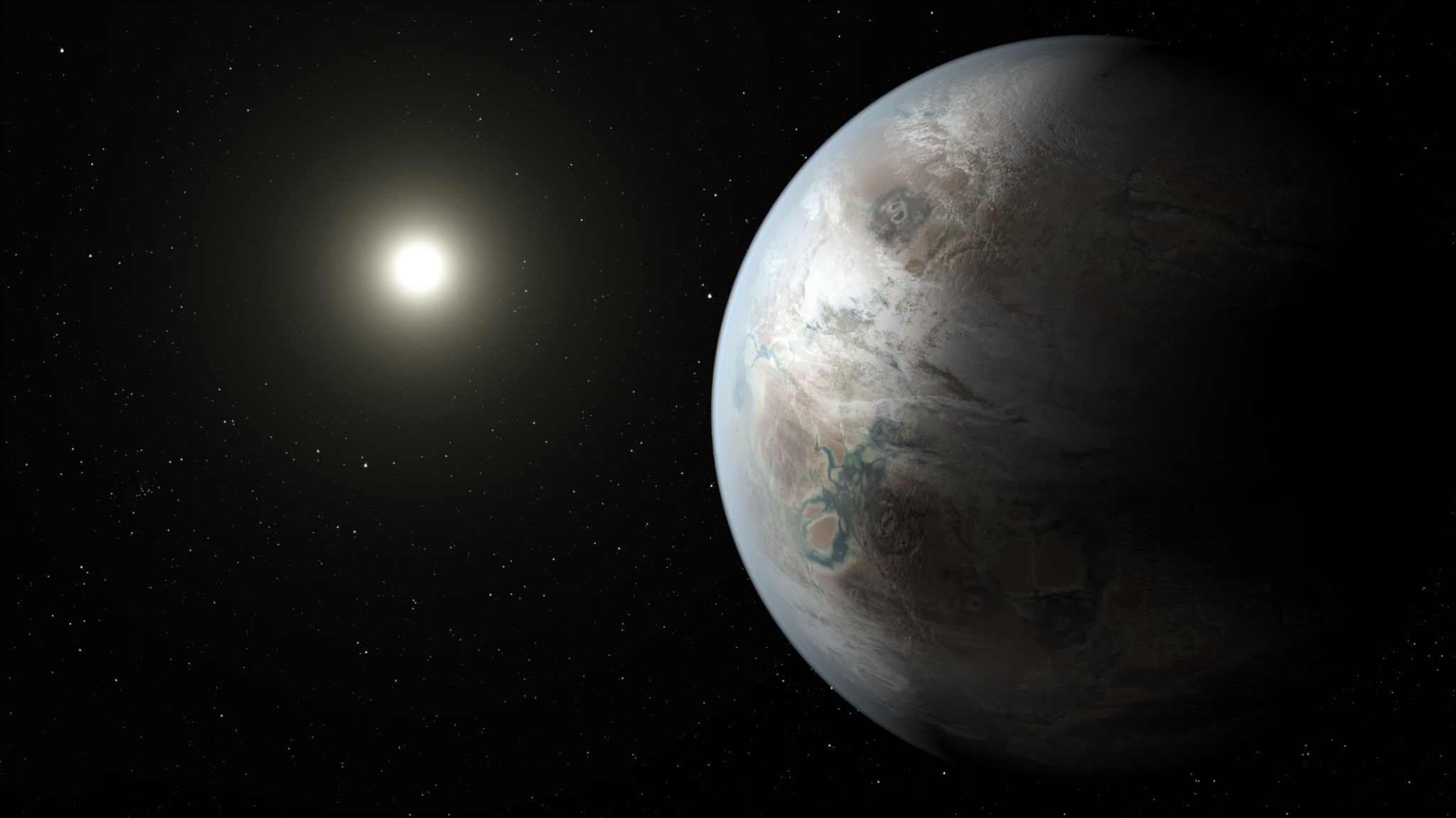
Kepler-62 f
The five planets of the Kepler-62 system orbit a star two-thirds the size of the Sun and only one-fifth as bright. At 7 billion years old, the system is older than our Sun.
Kepler-62 is home to two habitable zone worlds, Kepler-62 f and Kepler-62 e. Kepler-62 f orbits every 267 days and is only 40 percent larger than Earth, making it one of the smallest exoplanets known in the habitable zone of another star.
